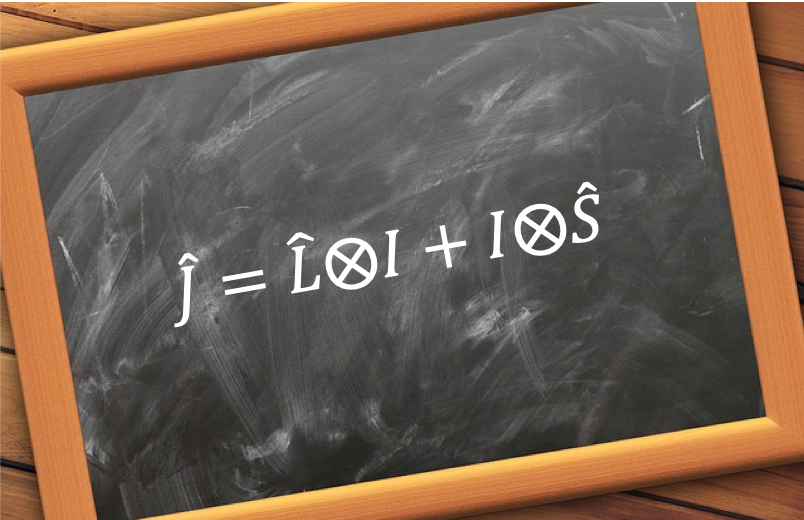Russell Saunders coupling, or L-S coupling, is a method to derive the total angular momentum of a light multi-electron atom from its component angular momenta. It assumes that spin-spin coupling > orbit-orbit coupling > spin-orbit coupling. This coupling scheme leads to the grouping of degenerate eigenstates into terms and levels, both of which correspond well with spectroscopic data of elements in the first three periods of the periodic table.

The total angular momentum of a 1-electron atom is defined as the vector sum
, where
and
are the orbital angular momentum and spin angular momentum, respectively, of the electron in the atom. For an
-electron atom, Henry Russell and Frederick Saunders proposed that the total angular momentum
of the atom is
, where
and
. If we use a 2-electron atom as an example, the corresponding operator is:
Since spin-spin coupling > orbit-orbit coupling > spin-orbit coupling, the spin angular momenta couple amongst themselves and the orbital angular momenta couple amongst themselves, before the total spin angular momentum couples with the total angular momentum. Hence, we have and
. The eigenstates of
are coupled representations of the basis vectors of
and
, while the eigenstates of
are coupled representations of the basis vectors of
and
. The eigenstates of
can either have the form of an uncoupled representation
or a coupled representation
. The uncoupled representation is used when spin-orbit coupling is weak.
